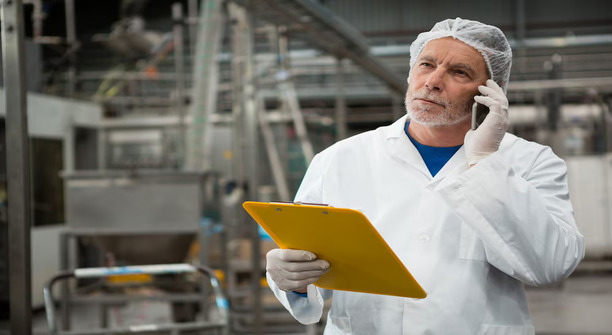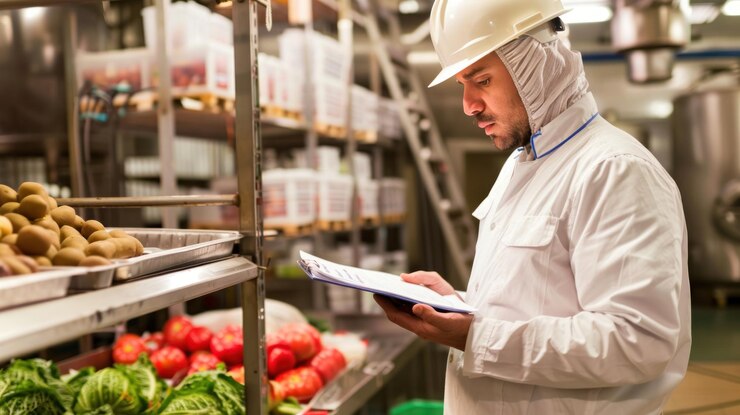The Critical Role of Hygienic Plumbing in the Food Industry
- Blog
- The Critical Role of Hygienic Plumbing in the Food Industry
The Critical Role of Hygienic Plumbing in the Food Industry
Table of Contents
- What is the Importance of Hygiene in the Food Industry?
- What is Hygienic Piping and Why is it Critical?
- What are the Key Features of Hygienic Piping?
- How is the Role of Piping Determined in Food Safety?
- Hygienic Piping Materials and Standards
- What to Consider in Piping Design?
- Maintenance and Cleaning of Hygienic Piping
- Common Piping Mistakes in the Food Industry
- Cost and Efficiency Benefits of Hygienic Piping
- Sustainability and Hygienic Piping
- The Future of Hygienic Piping and Innovations
What is the Importance of Hygiene in the Food Industry?
The food industry directly impacts human health, making hygiene a top priority. Failure to adhere to cleanliness standards at any stage—from production to packaging—can lead to serious health issues. The risk of contamination, particularly from microorganisms, poses a significant threat to both consumers and producers. Hygiene not only ensures product quality but also defines a brand’s reliability. Consumers trust food produced in hygienic conditions, which strengthens a company’s market position.
One of the most critical components in maintaining hygiene is the piping systems used in production facilities. Pipes, valves, pumps, and other equipment form the pathways for food products. If these systems are not properly designed or regularly cleaned, microbial buildup becomes inevitable. In the food industry, hygiene goes beyond surface cleaning; the internal structure of piping is just as crucial. Thus, hygienic piping systems are a cornerstone of food safety. For instance, in facilities processing sensitive products like dairy, non-hygienic piping can lead to spoilage and health risks, damaging both reputation and compliance.
What is Hygienic Piping and Why is it Critical?
Hygienic piping refers to systems designed for the food industry with a focus on cleanability and contamination prevention. These systems ensure the safe transport of food during production, processing, and distribution. The primary goal of hygienic piping is to guarantee that food reaches consumers without exposure to chemical, biological, or physical contaminants. It is indispensable in sectors like dairy, beverages, and ready-to-eat food production.
The criticality of these systems stems from the fact that food safety depends directly on piping quality. For example, residues in poorly designed piping can cause bacterial growth, jeopardizing the entire production line. When designed to international standards, hygienic piping helps businesses meet regulatory requirements and protect consumer health. Moreover, these systems enhance production efficiency, optimizing costs. Without hygienic piping, achieving quality and reliability in the food industry is nearly impossible, as it ensures both product integrity and consumer trust.

What are the Key Features of Hygienic Piping?
Hygienic piping systems are tailored to the food industry’s unique needs. First, the materials used, such as stainless steel, must be corrosion-resistant and easy to clean. Additionally, the inner surfaces of the pipes should be smooth, with no dead zones where residues could accumulate. This feature prevents microbial retention and simplifies cleaning processes.
Another key feature is the modular design of the piping. Modular systems make maintenance and cleaning faster and more effective. Furthermore, hygienic piping must meet high sealing standards to prevent contaminants from entering the system from the external environment. Smooth surfaces, consistent flow, and accessibility enhance the importance of hygienic piping in ensuring food safety and operational efficiency.
How is the Role of Piping Determined in Food Safety?
Food safety requires meticulous oversight at every stage of production. Hygienic piping serves as critical control points in this process. For instance, residues in pipelines carrying liquid foods can increase the risk of cross-contamination. Therefore, the design and maintenance of piping are integral to food safety protocols.
Piping’s role extends beyond transportation to include technical aspects like temperature control and pressure balance. Sensitive products, such as dairy, require processing within specific temperature ranges. Hygienic piping maintains these conditions, preventing spoilage. Regular inspections of piping systems allow early detection of risks, ensuring food safety. These inspections help businesses protect consumer health and minimize production losses.
Hygienic Piping Materials and Standards
Materials used in food industry piping must be food-contact safe. The most common material is high-quality stainless steel, which is durable and resistant to chemical reactions. Additionally, piping components must comply with international standards like FDA and EHEDG, ensuring no toxic substances are released during food contact.
Another consideration in material selection is resistance to cleaning chemicals. Strong disinfectants used in food facilities can corrode materials if not properly chosen. Thus, hygienic piping is designed to be long-lasting and chemical-resistant. Compliant materials enable businesses to meet regulatory requirements while maintaining product quality. Stainless steel, for example, offers both hygiene and durability, making it ideal for food industry standards.
What to Consider in Piping Design?
Hygienic piping design is one of the food industry’s most complex processes. First, the flow direction must be considered. Proper food transport requires optimized pipe slopes and connection points. Additionally, dead zones must be avoided, as these areas promote bacterial buildup.
Another critical aspect is automation systems. Automated valves and sensors ensure precise operation, minimizing human error. Furthermore, piping accessibility simplifies maintenance and cleaning. Well-designed piping enhances production efficiency and maximizes food safety. Automated systems, for instance, streamline cleaning processes, saving time and resources.
Maintenance and Cleaning of Hygienic Piping
Regular maintenance of hygienic piping ensures continuity in the food industry. Cleaning is typically performed using CIP (Clean-in-Place) systems, which clean the interior without disassembly, saving time. CIP systems use disinfectants and hot water to ensure every part of the piping is hygienic.
Maintenance involves checking sealing gaskets and other components regularly. Additionally, microbiological tests verify cleanliness levels. Proper maintenance extends piping lifespan while safeguarding food safety. Neglecting these processes can lead to product losses and regulatory penalties. CIP systems are indispensable for maintaining hygiene standards in modern food facilities.
Common Piping Mistakes in the Food Industry
Piping errors in the food industry can have severe consequences. The most common mistake is choosing inappropriate materials. Non-food-safe materials can cause chemical contamination. Additionally, designing piping with dead zones increases bacterial buildup and complicates cleaning.
Another frequent error is lack of regular maintenance. Failure to clean piping for extended periods leads to biofilm formation, threatening food safety. Furthermore, inadequate inspections allow minor issues to escalate. Businesses must regularly review piping systems and seek professional support to avoid these mistakes.
Cost and Efficiency Benefits of Hygienic Piping
While hygienic piping requires a significant initial investment, it offers long-term cost benefits. High-quality piping reduces maintenance and cleaning costs while improving efficiency. Compliant systems also help businesses avoid regulatory fines.
Efficiency-wise, hygienic piping minimizes production losses and ensures energy savings. Well-designed systems reduce water and chemical usage, lowering operational costs and environmental impact. Hygienic piping supports businesses in achieving economic and environmental sustainability goals.
Sustainability and Hygienic Piping
In the food industry, sustainability is gaining importance both environmentally and economically. Hygienic piping optimizes water and energy use, reducing the environmental footprint. For example, CIP systems significantly cut water consumption during cleaning. Durable materials also extend piping lifespan, reducing replacement needs.
Sustainable piping facilitates waste management. Designs that prevent residue buildup minimize waste and support recycling. Integrated with smart technologies, piping enhances energy efficiency, helping businesses lower carbon emissions. This aligns with the food industry’s environmental responsibilities.
The Future of Hygienic Piping and Innovations
Hygienic piping in the food industry is evolving with technological advancements. Internet of Things (IoT) technology enables real-time monitoring of piping systems, allowing preventive maintenance. Additionally, artificial intelligence automates cleaning and maintenance processes.
In the future, nano-coatings and antimicrobial surfaces may become standard, further preventing bacterial growth. Moreover, energy-efficient designs will reduce costs and environmental impact. Hygienic piping will play an increasingly vital role in the food industry’s future, driven by innovation.


